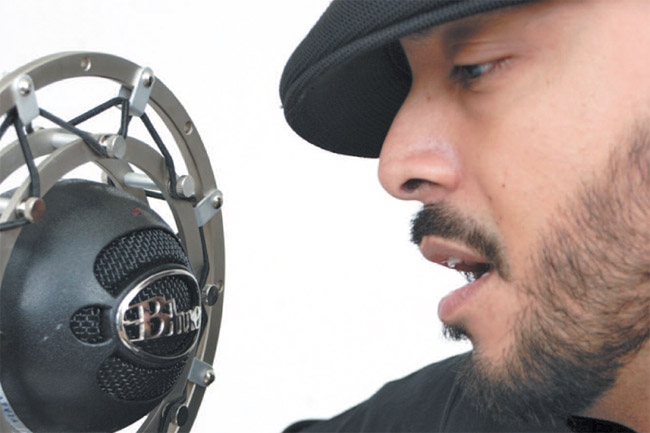A Late Bloomer
Steven Espaniola continues to thrill Hawaiian music lovers with the release of his newest album. Thank goodness he discovered his voice in his late 20s
Some people leave their hearts in San Francisco. In Steven Espaniola’s case, he found his voice there. Not that he was actively looking for it in the first place. Even he admits that despite growing up in a family full of musicians and dabbling in the ukulele realm “here and there as a kid,” he had no real desire to pursue the uke or any other instrument.
But life has a way of leading us down the most unexpected paths.
Shortly after the Aliamanu-born Espaniola relocated to the Bay Area in the late ’80s, his interest in Hawaiian music – perhaps brought on by the passing of his musically inclined grandmother and, as a result, a desire to reconnect with his Hawaiian-style upbringing – began to take root. Before long, this late bloomer was teaching himself how to play slack key guitar and upright bass. Later, he found himself performing with a San Francisco-based traditional Hawaiian band and seemingly content with life as a backup musician – that is, until fate intervened and introduced him to the world of leo ki’eki’e.
“I had to learn how to sing falsetto after the lead singer in the band left the group,” Espaniola recalls. “At the time, I really didn’t know if I could sing or not, but I figured I’d give it a try. We were doing a lot of Hui Ohana stuff back then and I was familiar with the music. Growing up, I listened to Hawaiian radio stations and my grandma, my uncles and my aunts would play these same songs around the house all the time, so the music was already ingrained in my system. At that point, it was easy enough for me to mimic and eventually find my voice.”
And what a voice it is. Music contemporaries have long praised his rich falsetto for its purity and clarity, and hints of yesterday’s legends – Aunty Genoa Keawe, Gabby Pahinui, Dennis Pavao – can be heard in his vocal stylings. “I guess you could say that I’m an old soul,” he tells me. “The songs that I do aren’t the typical songs my friends were listening to growing up.”
Thank goodness he found his musical gene in the city by the bay, even though this discovery didn’t happen until Espaniola was already in his late 20s. Yet even this multi-talented musician would admit that it’s better to be late to the party than to never arrive at all.
“Even though I was already older, once I found my calling in music, I just couldn’t get enough of it,” says the now 30-something artist. “It became a passion that I had to pursue.”
His latest solo album, Ho’omaopopo, is a worthy follow-up to his first CD – 2006’s Ho’omaka. Like its predecessor, the new project features a mix of old standards (Meleana E, Aloha Ko’olau, Waiulu) and modern originals (Ka Wahine Helekai, Ku’u Lio). The album also boasts the talents of Na Hoku Hanohano-award winning producer/engineer Dave Tucciarone, fellow musicians Bryan Tolentino, Jeff Peterson and Matt Sproat, and executive producer April Hokulani, who happens to be Espaniola’s wife and the one responsible for helping him transition into a solo career.
“Without her encouragement I would never have branched out as an artist,” Espaniola says. “She gave me the confidence to open my eyes to the possibilities.”
Here’s what else Espaniola told Musical Notes:
MN: If you weren’t a professional musician, what would you be doing now?
SE: Probably something in the arts – in the graphic design or photography fields. That’s the route I would have gone.
MN: Was there a reason for the seven-year gap between albums?
SE Actually, several. For one thing, I recorded the first album with Dave Tucciarone, and I wanted to record the second one with him as well. But because it was harder to get back to Hawaii, the recording process wound up taking longer – four years, in fact. For another, my wife and I had two children in between albums. Also, I ruptured my vocal chords last year, so that sort of sidelined me for about six months.
MN: You sound good. How’s the voice?
SE It’s doing well. What’s weird about my voice, and even Dave noticed this after the recordings, is that it was noticeably stronger after the injury. I had so much more control over it.
MN: Last week, you made your way back to the Islands for your CD release party. In the coming weeks and months, you’re scheduled to do an East Coast swing before heading off to Japan. Do you find people from all over the globe embracing Hawaiian music?
SE Absolutely. Earlier this year, for example, I went with a group of traditional Hawaiian music artists to Mexico City to play – and the place was packed! I also did a slack key workshop there and the response was just awesome. Hopefully, this is just the beginning of something bigger for Hawaiian music.






